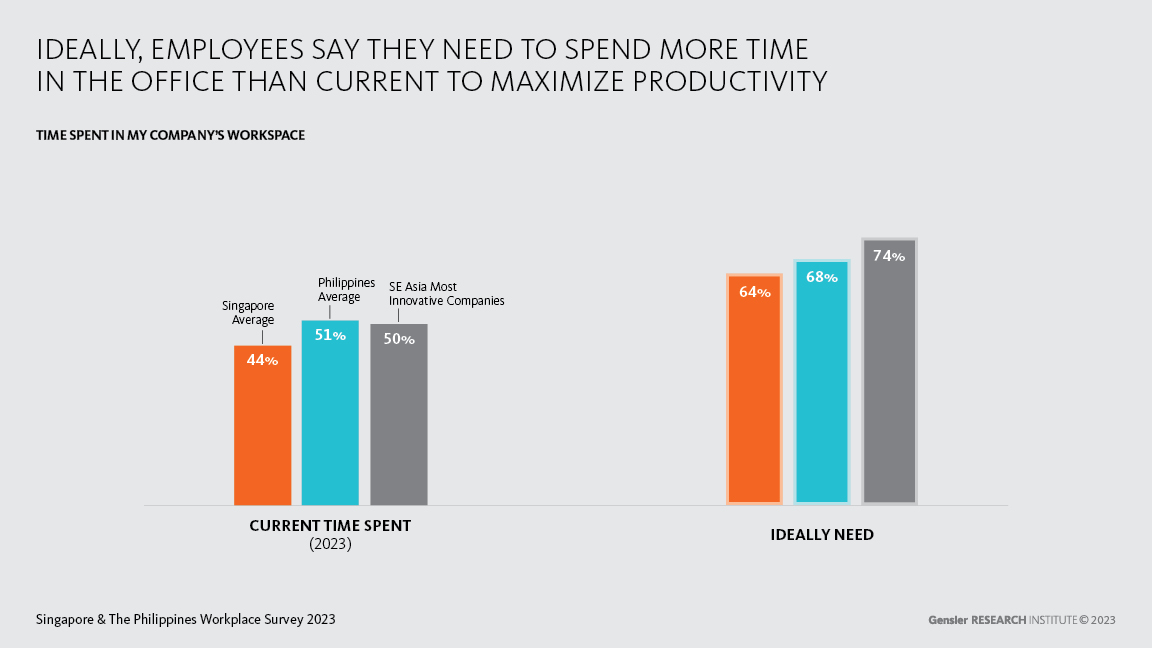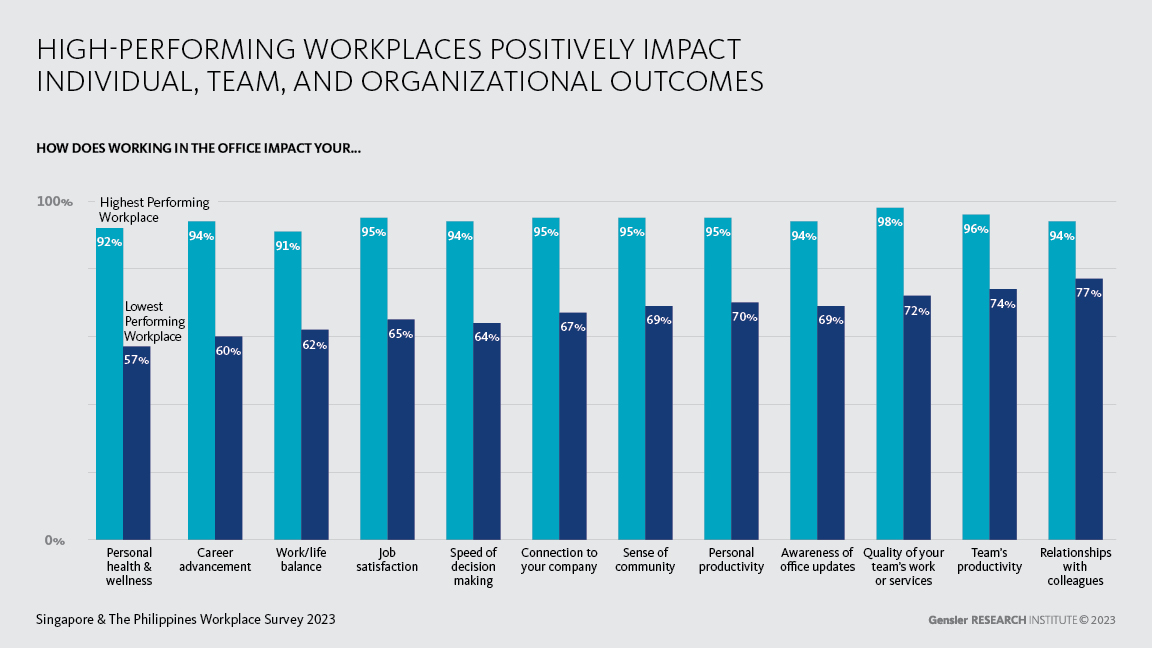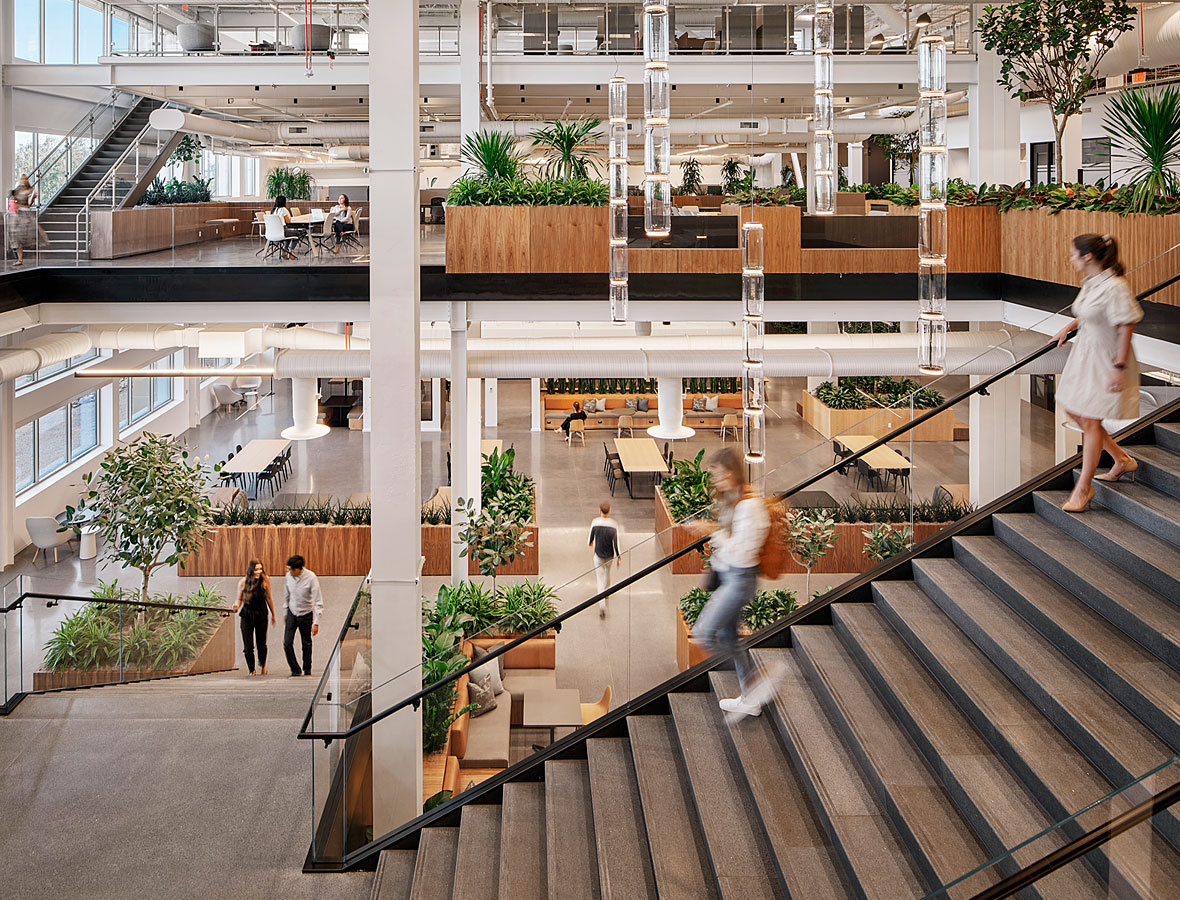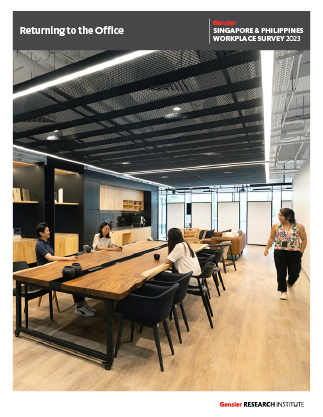Singapore’s property industry is coming to terms with the idea that the city may not have a central business district within the next decade, according to Bloomberg. Offices in Singapore will instead be designed without the “rigid boundaries between places where people work, and where they live, shop, and dine.” As this shift unfolds, there is an opportunity to reimagine the new expectations and priorities office workers have for their workplace. Gensler’s inaugural Singapore and Philippines Workplace Survey explores what employees value from their offices, the spaces that have the most impact, and the benefits of designing high-performance workplaces.

Employees value the office to get their work done.
Office workers in Singapore and the Philippines stated that the most important reason to come into the office was to focus on their work. Workers in Singapore also value the office for scheduled, in-person meetings and access to technology, whereas employees in the Philippines prioritize opportunities for learning and socializing.

The office is perceived to be a place to optimize productivity.
Despite workers across Singapore and the Philippines spending around half of their typical work week in the office, they report that they ideally need to come into the office more often to maximize their individual and team productivity. This suggests that the workplace is perceived to be a place that enhances productivity, but something is holding employees back from coming in more often.

High-performing workplaces positively impact business outcomes.
Workers in high-performing workplaces — measured using our Workplace Performance Index — say that they need to come to the office even more than the average employee to maximize their productivity. High-performing workplaces have a significant impact on individual and business outcomes. These workplaces are correlated with better personal health and wellness, career advancement and work/life balance, as well as business outcomes such as quality of work and speed of decision making.

Singapore & Philippines Workplace Survey 2023 Methodology
The Gensler Research Institute conducted an anonymous, panel-based survey of 2,022 office workers across Singapore and the Philippines, using a third-party panel provider. It was in the field between November 3 and December 20, 2022. The research is part of a larger study of 14,000+ office workers across nine countries conducted in Q3/Q4 2022. At the time of the data collection, respondents were required to be working from the office at least some of the time, excluding fully remote workers and workers who had not returned to the office since the start of the pandemic. Respondents are distributed across nine client industries and represent a broad cross section of demographics, including job role, company size, age, commuting distances, and geographies across Singapore and the Philippines.

Download the full Singapore and Philippines Workplace Survey 2023 to explore how the workplace can offer experiences and spaces that respond to the needs and desires of office workers. Our data provides key insights into where design interventions can be made to improve the overall effectiveness and experience of the modern office.